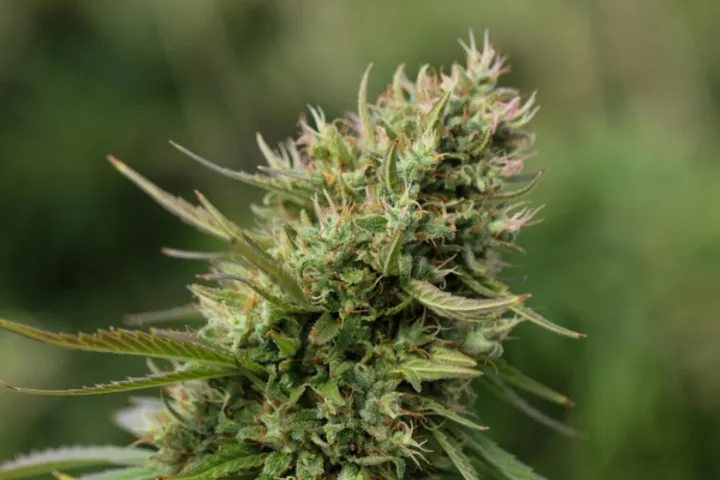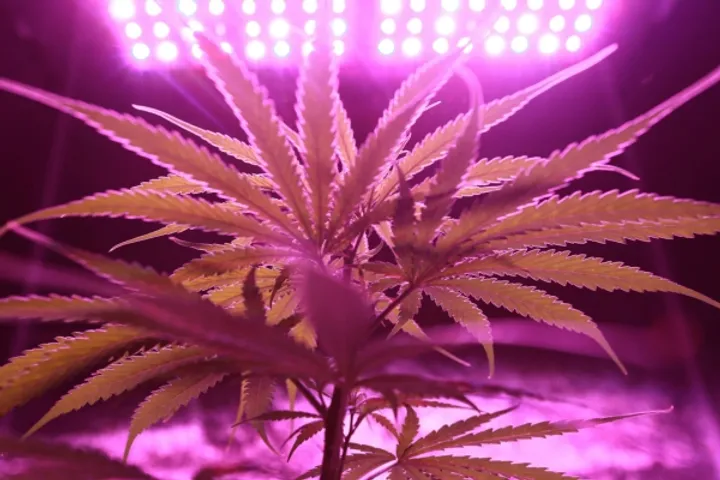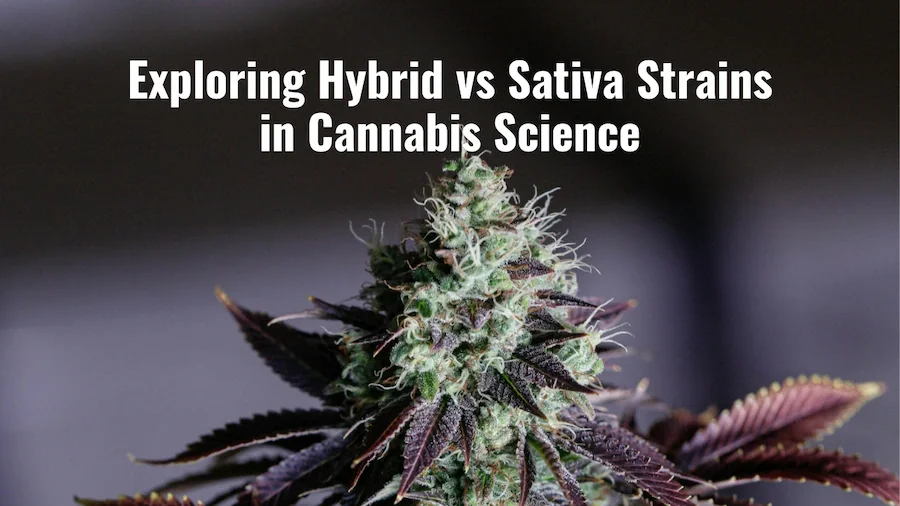Science serves as both a guide and a gateway to understanding the complexities of cannabis, including the intricate differences between Hybrid vs Sativa strains. From the molecular level to the macroscopic effects on the human body, cannabis offers a fascinating lens through which to explore the intersection of botany, pharmacology, and human biology.
At its essence, cannabis is a symphony of chemical compounds, featuring cannabinoids, terpenes, and flavonoids, each contributing to the plant’s aroma, flavor, and effects. THC (tetrahydrocannabinol) and CBD (cannabidiol) are perhaps the most well-known cannabinoids, with THC being responsible for the euphoric “high” associated with cannabis consumption, and CBD offering a myriad of potential therapeutic benefits without the intoxicating effects. But the story doesn’t end there. Beyond THC and CBD lie a multitude of lesser-known cannabinoids, each with its unique properties and potential applications.
Terpenes, the aromatic compounds found in cannabis and other plants, add another layer of complexity to cannabis. Terpenes contribute to the plant’s fragrance, but they also modulate its effects on the body and mind, creating a multifaceted experience for consumers.
Recent advancements in analytical chemistry and bioinformatics have revolutionized our understanding of cannabis, allowing researchers to explore more about genetic makeup and physiological effects. Through techniques such as genome sequencing and metabolomics, scientists are deciphering the mysteries of cannabis genetics and pharmacology, laying the groundwork for personalized cannabis therapies.
As we explore further, it becomes evident that our understanding of cannabis extends beyond its chemical components. The intricate interplay of cannabinoids, terpenes, and other phytochemicals yields a diverse array of effects and experiences, influenced by factors ranging from genetics to environmental conditions. This diversity is particularly apparent in the distinct profiles of cannabis strains.
In the following sections, we will explore the unique characteristics, growth patterns, effects on the body and mind, and common uses of Hybrid and Sativa cannabis strains, shedding light on their respective roles in cannabis cultivation and consumption.
- Analyzing the Sativa Strain
- Understanding Hybrid Strains
- Origins and History
- Genetic Composition
- Growth and Cultivation
- Potency and THCA Levels
- Sativa and Hybrid Effects

Analyzing the Sativa Strain
Sativa cannabis has earned a revered status among cannabis enthusiasts worldwide, cherished for its invigorating and mood-lifting effects. Originating from equatorial regions like Central and South Africa, as well as Southeast Asia, Sativa strains thrive in warm climates with abundant sunlight. These towering plants exhibit elongated leaves, slender stems, and a vibrant green color, Indicative of their tropical heritage and adaptability to various environments.
Apart from their physical attributes, Sativa cannabis plants offer a sensory experience unlike any other, delighting the senses with a medley of fruity, floral, and spicy aromas. The effects of Sativa strains are equally captivating, delivering a cerebral high that sparks creativity, sharpens focus, and uplifts the spirits. Whether enjoyed alone or shared among friends, Sativa strains encapsulate the essence of exploration and inspiration, beckoning enthusiasts to embark on a journey of self-discovery and enlightenment.
People are usually familiar with the two main strains of cannabis – Sativa and Indica. More often than not they are compared against each other given their distinct characteristics. However, Sativa also deserves to be contrasted with Hybrids.
Understanding Hybrid Strains
Hybrid strains, sometimes referred to as “Hybrid weed” or “Hybrid cannabis” by users, are a true testament to human creativity and botanical curiosity. Bringing together the best of both worlds, Hybrid strains are the product of combining Indica and Sativa genetics. This intentional fusion of traits aims to create strains that offer a balanced mix of effects, appealing to a wide range of preferences. Through careful breeding and genetic tinkering, breeders work tirelessly to develop Hybrids that embody the most desirable characteristics inherited from their parent strains.
The genetic makeup of Hybrid cannabis is as intricate as it is intriguing, with each strain boasting a unique combination of cannabinoids, terpenes, and other plant compounds. While some Hybrids lean towards Indica dominance, offering a calming and physically soothing experience, others showcase pronounced Sativa traits, delivering a euphoric and mentally uplifting high. The versatility of Hybrid strains opens the door to endless possibilities for experimentation and innovation, propelling the continuous evolution of cannabis culture and industry.
Origins and History
The stories behind Hybrid and Sativa cannabis strains are deeply rooted in human history, stretching back many years of cultivation and consumption practices. In Africa, Sativa strains held a significant role in religious rituals and social gatherings, fostering spiritual enlightenment and communal bonds. Similarly, in Southeast Asia, it was esteemed for its fiber and seed production, contributing to local agricultural traditions. As trade routes expanded and cultural interactions flourished, Sativa cannabis spread to new regions, influencing customs and traditions along the way.
With the advancement of modern breeding techniques, the cannabis landscape has diversified, giving rise to Hybrid varieties that blend the best attributes of both Indica and Sativa. Hybrid strains in cannabis have been around for quite some time, with their origins rooted in the natural and artificial crossbreeding of these strains.
The concept of Hybridization in cannabis is similar to that in other organisms, where two diverged plants mate to form a novel lineage with a chimeric genome. Hybrids may exhibit unique phenotypic traits that are not necessarily intermediate between those present in the progenitors, and these unique traits may enable them to thrive in new environments. These Hybrids can be classified as Indica-dominant, Sativa-dominant, or balanced, depending on their cannabinoid and terpene profiles.

Genetic Composition
The genetic makeup of Hybrid vs Sativa cannabis strains sparks great interest and debate among botanists, breeders, and enthusiasts. The genetic composition characteristics include physical attributes like plant structure, leaf shape, and flower appearance, as well as chemical composition such as cannabinoid and terpene profiles. The phenotype, this wide range of characteristics, is influenced by the interaction between the inherited genes and the environment, resulting in unique Hybrid strains with a blend of traits from both parent plants.
On the other hand, Sativa strains stand out with their tall, slender plants and narrow leaves, a sharp contrast to the shorter, wider-leaved Indica varieties. The Indica vs Sativa comparison is most evident in their effects: Sativas are known for their uplifting and energizing qualities, while Indicas are prized for their relaxing and sedative properties. The genetic composition of Sativa and Indica strains dictates their distinct characteristics, with Sativas typically exhibiting a higher THC-to-CBD ratio.
Growth and Cultivation
Cultivating Hybrid and Sativa cannabis plants demands a solid grasp of their distinct growth needs and environmental preferences. Sativa strains flourish in warm, sun-drenched climates with well-draining soil and ample airflow, mirroring the conditions found in their native habitats. These towering, slender plants require adequate space to spread out and soak up the sunlight, making outdoor cultivation ideal in regions with lengthy growing seasons.
When it comes to Sativa vs Hybrid cultivation, Hybrids offer a more flexible approach, with their varied genetic makeup allowing them to thrive in a range of environments and cultivation setups. Whether cultivated indoors or outdoors, Hybrids respond favorably to attentive care and proper nutrient management, resulting in robust yields and high-quality flowers. From soil composition to watering regimens, every aspect of cultivation influences the final product, emphasizing the necessity of patience and expertise to achieve optimal outcomes.
Potency and THCA Levels
If you compare the THCA percentage of Indica vs Sativa vs Hybrid strains, you will find that Sativa strains typically contain higher levels of THCA, resulting in a more pronounced effect. The potent and uplifting properties of the best Sativa strains tend to contribute to the popularity of this strain among recreational users, particularly those seeking a cerebral and energizing experience. Sativa strains can have THCA levels ranging from around 13% to 25%, with some popular options being Sour Diesel, Strawberry Mimosa, and Pandemic Punch.
Hybrid cannabis, with its balanced blend of Indica and Sativa genetics, offers a more nuanced approach to potency and psychoactivity. Depending on the specific lineage and cannabinoid profile, Hybrid THC levels can go from mild to moderate, to high and potent. It all depends on if it is a Sativa Hybrid or an Indica Hybrid. And since Hybrids may also contain varying levels of CBD, this can modulate the effects of THC. The usual THCA range for Hybrid strains remains quite similar for Sativa strains, but the average tends to be lower. Among the popular choices for Hybrid strains, you may find Tropical Runtz, Gelato 41 Exotic, and Triple Hash Burger.
Sativa and Hybrid Effects
The effects of Hybrid and Sativa cannabis strains are more than just about getting high – they encompass a whole range of physical, emotional, and psychological experiences. Sativa strains are famous for their mood-lifting effects, boosting creativity, sharpening focus, and bringing on a feeling of euphoria. These cerebral effects often come with a burst of energy and heightened senses. That is why people prefer enjoying them during the day, to maximize their benefits.
Compared to Sativa or when evaluating Hybrid vs Indica effects, the Hybrid strains offer many more options to choose from. Depending on the specific strain and cannabinoid profile that was used to create them, you can get different Hybrid strain effects, from relaxation and discomfort relief to euphoria and introspection. This versatility makes Hybrids so attractive. Whether you are contemplating a head high vs body high, they have an alternative for whatever you are looking for.
As we explore the complex world of cannabis science, let’s remember that curiosity is our greatest asset. By embracing it and collaborating, we can fully understand the potential of this amazing plant, using it to inspire and make a difference for generations. Here, every breakthrough brings us closer to unlocking the secrets of Hybrid vs Sativa strains, underscoring the richness and diversity of cannabis. Visit the D8Austin shop and get a taste of what nature and science have accomplished.




